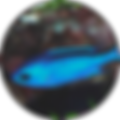
Rebuilding a reef damaged by humans
Our coral nursery aims to restore diversity to the area by propagating corals to outplant, conserving keystone species and providing habitat for marine animals.
ABOUT OUR NURSERY
In our coral nursery, we cultivate coral fragments on 26 underwater platforms. Dr German, the volunteers and interns carefully tend to these fragments, monitoring their growth into larger colonies that are eventually outplanted back onto the reef.
Our initial nursery consists of 16 shallow-water artificial reef platforms (3-6m depth) made of concrete. Unfortunately, declining water quality and warmer waters near the shore have been negatively affecting the corals.
As a result, we have started 10 deeper water platforms (8m depth), further from shore where the currents bring cleaner and cooler water. The corals are responding better. We are focusing our efforts here in near future and we hope to outplant to the surrounding deeper waters of the Villa Blanca reefs.
Our shallow water platforms are still actively maintained by our volunteers who scrub off algae and give the corals a fighting chance. They serve as an important educational tool for the visiting public. Our unique shore accessible location allows visitors to simply swim out to visit the reefs.
We believe that experiencing the reef firsthand fosters a deeper appreciation for its beauty and importance. Many tour operators do bring visitors to swim with the colorful fish that call the corals home. However, most come with little to no education how to treat the corals, sometime accidentally kicking or touching and damaging the corals. Directly support our work by taking our snorkel tours and scuba tours, where we go beyond the typical tourist experience, teaching you how to protect this vital ecosystem while witnessing our conservation efforts.



We hope that visiting our coral nursery inspires stewardship and motivates visitors to advocate for reef conservation.
OUR REEF RESIDENTS
In our nursery, we hold many of the representative species of corals found here in Cozumel, in order to conserve and propagate them. Over the years, our coral fragments have grown into larger colonies and they provide habitat to many fish and invertebrate species. Swimming among our platforms, you can often spot many baby fish sheltering hiding within the coral. You can also spot other marine animals like lobsters, seahorses, starfish and crabs, which are critical to the functioning of the reef eco-system.

Acropora palmata
Elkhorn Coral

Montastraea cavernosa
Great Star Coral

Acropora cervicornis
Staghorn Coral

Manicina areolata
Rose Coral

Agaricia tenefolia
Lettuce Coral

Porites astreoides
Mustard Hill Coral

Pseudodiploria strigosa
Brain Coral

Orbicella annularis
Boulder coral

Bluestriped grunt
Haemulon sciurus

Nurse Shark
Ginglymostoma cirratum

Yellowhead Jawfish
Opistognathus aurifrons

Bluehead wrasse
Thalassoma bifasciatum

Flying Gurnard
Dactylopterus volitans

Puddingwife Wrasse
Halichoeres radiatus

Peacock Flounder
Bothus lunatus

Spotted Scorpionfish
Scorpaena plumieri

Caribbean Reef Octopus
Octopus briareus

Longsnout Seahorse
Hippocampus reidi

French Angelfish
Pomacanthus paru

Smooth Trunkfish
Lactophrys triqueter

Spotted drum
Equetus punctatus

Caribbean Spiny Lobster
Panulirus argus

Sergeant major
Abudefduf saxatilis

Queen Angelfish
Holacanthus ciliaris

Trumpetfish
Aulostomus maculatus

Yellow Stingray
Urobatis jamaicensis

Blue Chromis
Chromis cyanea

Spotted Eagle Ray
Aetobatus narinari

Green moray
Gymnothorax funebris

Spotted moray
Gymnothorax moringa
HOW WE PROPAGATE CORAL
Sexual Reproduction
Corals face a tough challenge: they reproduce only once a year, releasing eggs and sperm into the ocean, hoping for the best. Most larvae perish, unable to find a safe place to settle or falling victim to predators and currents.
Scientists are lending a hand with Assisted Sexual Reproduction (ASR), collecting coral spawn and fertilizing it in labs. This boosts survival rates and allows for selective breeding of resilient corals, which is vital in our changing climate. The CCRRP works with various local organizations in the ASR program.
In Cozumel, we have been focusing on key reef-building corals, but haven't yet observed spawning in their monitored colonies. Despite this, they remain committed to using ASR to help protect and restore these vital ecosystems.

Asexual Reproduction
Corals have a remarkable ability to reproduce asexually, much like plants growing from cuttings. They can either bud, where new polyps grow and detach from the parent, or fragment, where broken pieces form new colonies. This resilience allows corals to recover from damage and spread across a reef.
Despite their rocky appearance, corals are surprisingly fragile. Our coral nursery is mostly populated by rescued coral fragments, broken by careless contact. We rescue them from getting smothered by sand and sediment on the sea floor. These fragments, given a safe and stable place to attach, can thrive and grow into new colonies. While this asexual reproduction is efficient, it produces clones, making them susceptible to the same threats as the parent coral.

TENDING TO OUR CORAL NURSERY

Just like a garden, our coral nursery needs constant care.
Volunteers regularly remove algae and sediment that can smother the corals and block their sunlight. This is especially important due to increased coastal development, which leads to higher nutrient levels in the water and fuels algae growth.
Additionally, nearby cruise ship traffic stirs up sediment that settles on the corals. Volunteers gently remove this sediment and also keep an eye out for coral-eating pests like fireworms and invasive species like lionfish. This hands-on approach helps ensure a healthy and balanced ecosystem where our restored corals can thrive.
VOLUNTEERS MAKE THIS ALL POSSIBLE
As we are a small NGO and there is a lot of manual work to help the Cozumel coral reefs to bounce back, we rely on great people like you who come as volunteers and interns to help with the project. We have been very lucky that people have come from all over the world to learn about corals and lend a helping hand to restore corals.
If you love marine life, wish to do something off the beaten path for your vacation, or wish to spend some time volunteering during your sabbatical to give back to the planet. Consider coming to volunteer with us. You can apply to be a volunteer or an intern.

EDUCATION AND AWARENESS

Easy access to the reef directly from the shore provides unparalleled educational opportunities. By experiencing the underwater world firsthand, visitors gain a deeper understanding of the challenges facing coral reefs and the interconnectedness of the marine ecosystem.
We regularly collaborate with universities, hosting student groups to visit the mangroves and reefs in Villa Blanca. By showing the young people how precious this natural resource is, we hope to inspire the next generation to protect Mexico's precious natural heritage.
If you are an education institute and wish to collaborate with us, please reach out.
RESEARCH AND COLLABORATION
As Dr German has worked with many students on their internship project and welcomes students and other organizations to collaborate with us to test their new tools and conservation techniques in our coral nursery.
We believe it is important to work with other people and organizations to quickly find the best and most efficient solutions to help conserve and restore our coral reefs as we are in a race against time to save them.
Please reach out to initiate a research collaboration with us.


